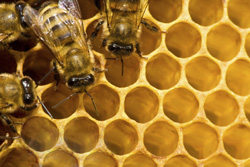Untangling the causes of colony collapse disorder
Parasites, viruses and pesticides are the three factors most widely accepted as being responsible for colony collapse and honeybee decline. No one factor is can be singled out though, meaning it is most likely a combination of threats. The EU-funded 'Bees in Europe and the decline of honeybee colonies' (BEE DOC) project aimed to improve colony health, fill knowledge gaps, and understand the interaction between viruses, parasites and pesticides in bees. Chemists, geneticists and apiculturalists combined their expertise for this research study. A strong link was found between the presence of Varroa mites and several viruses in bee colonies: it was confirmed that these mites carry the viruses. Combined with pesticides, this resulted in higher deaths in larvae and pupae. Two diagnostic tests were developed in response. One, called BeeClinic, is a research-grade diagnostic for the identification of a wide range of viruses, pesticides and other stressors. The other, BeeDoctor, is a detection method used to screen a hive for viruses. Researchers also showed that feeding bees probiotics as well as certain essential oils resulted in improved survival rates. BEE DOC has taken a comprehensive look at possible causes of honeybee mortality, and successfully developed new tools for farmers and scientists to use. All the project results have been made available to the public.







